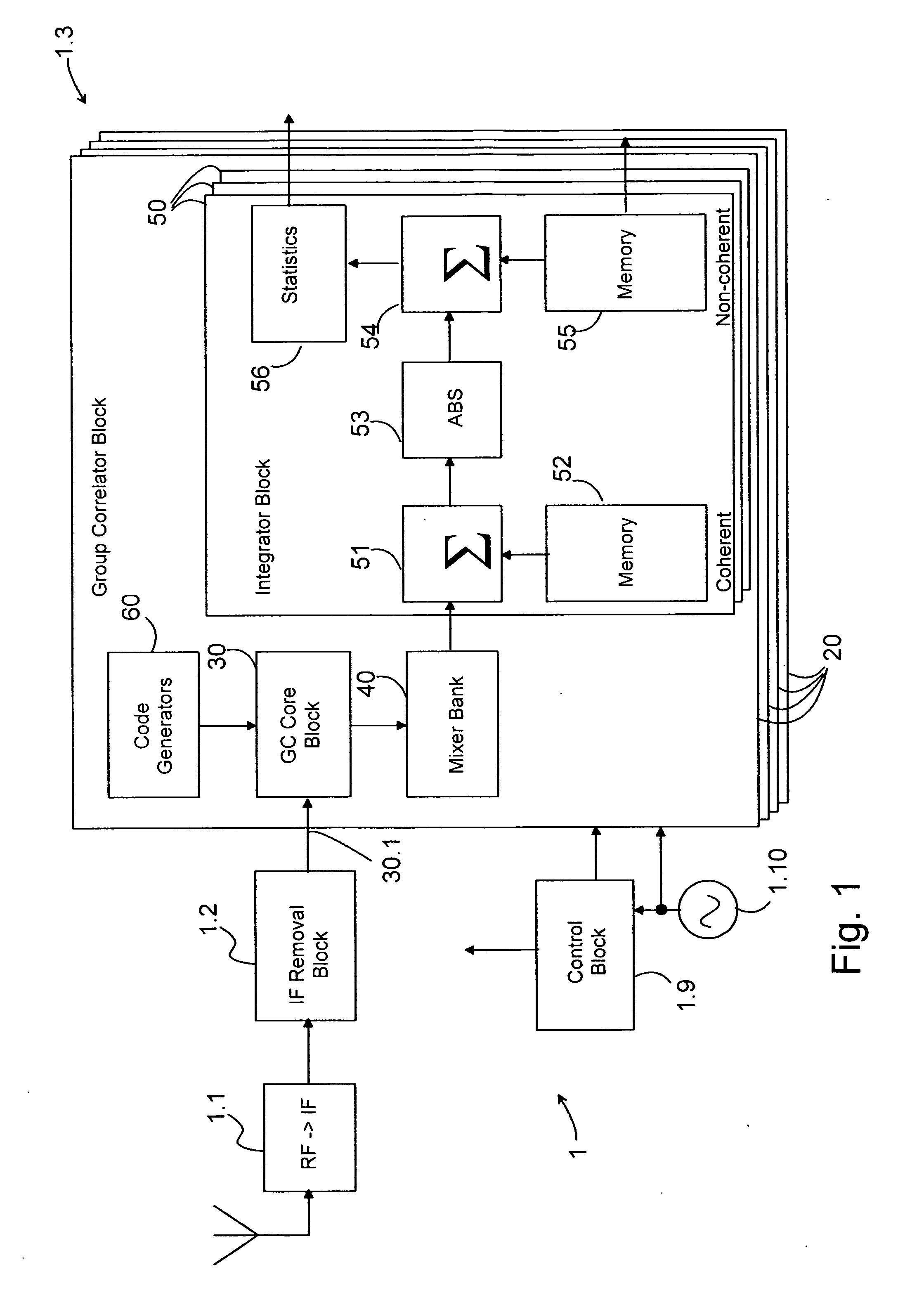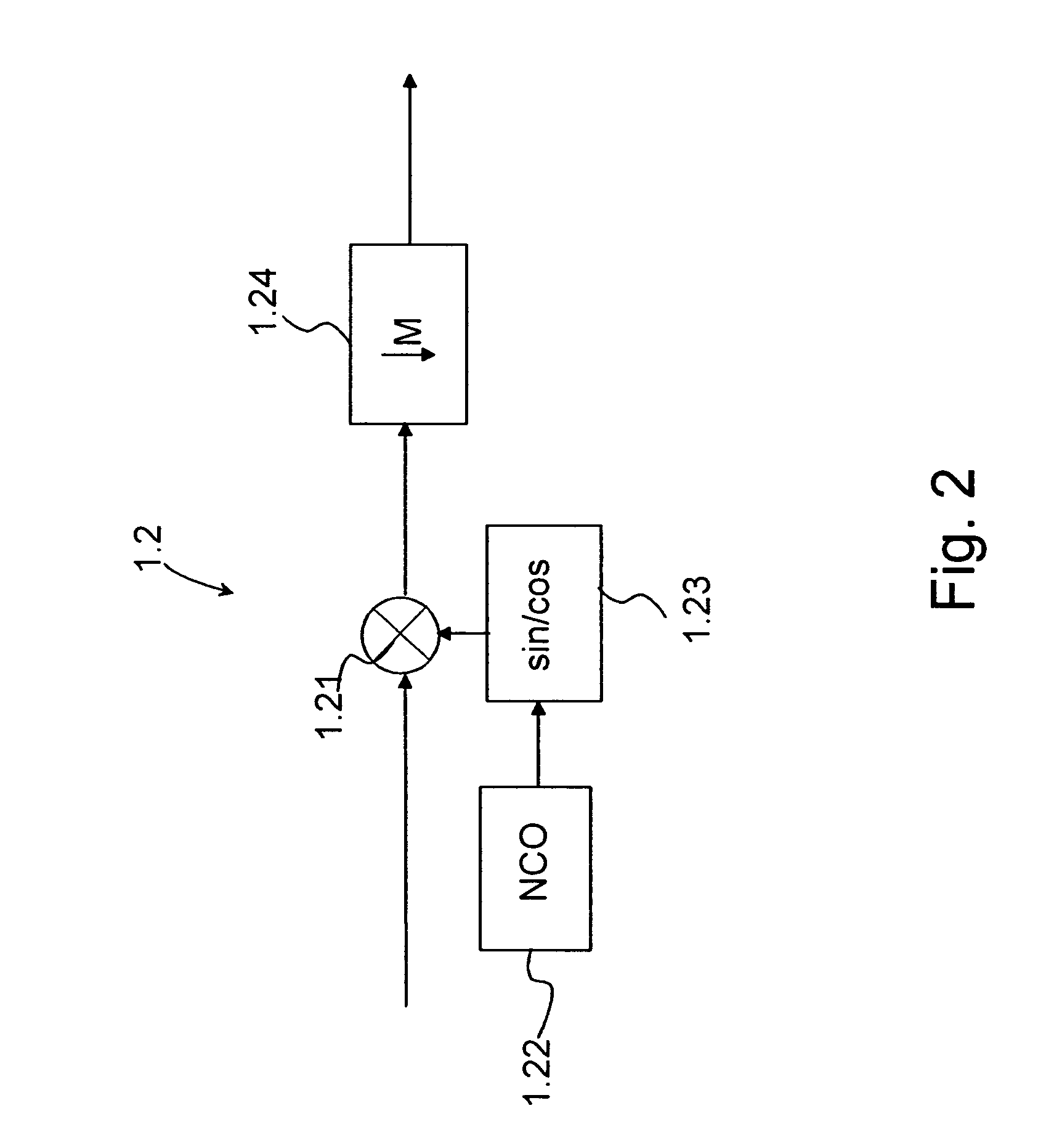Performing a correlation in reception of a spread spectrum signal
a technology of spread spectrum and correlation, which is applied in the field of correlations for performing correlations with received spread spectrum signals, can solve the problems of increasing the power consumption of the receiver, affecting the acquisition and tracking of signals, and affecting the accuracy of the signal to be received, so as to reduce the complexity of control and keep the hardware size small.
- Summary
- Abstract
- Description
- Claims
- Application Information
AI Technical Summary
Benefits of technology
Problems solved by technology
Method used
Image
Examples
Embodiment Construction
[0071] An example of a receiver 1 in which the correlator 1.3 according to the present invention can be applied, is illustrated in FIG. 1. The receiver 1 is a receiver of a satellite positioning system receiving spread spectrum modulated signals from satellite stations. However, it will be obvious that the invention can also be applied in other systems using spread spectrum modulated signals. The receiver 1 comprises a receiving stage 1.1 for taking the necessary steps for the processing of signals in a given frequency band, such as bandpass filtering, amplification, conversion to an intermediate frequency, and sampling. After this, the samples are input in an intermediate frequency removal block 1.2 and further in the correlator 1.3. In the correlator 1.3 the signals are processed as will be described later in this application.
[0072]FIG. 2 shows one intermediate frequency removal block 1.2 which can be used in the receiver 1 according to the invention. The samples input in the int...
PUM
 Login to View More
Login to View More Abstract
Description
Claims
Application Information
 Login to View More
Login to View More - R&D
- Intellectual Property
- Life Sciences
- Materials
- Tech Scout
- Unparalleled Data Quality
- Higher Quality Content
- 60% Fewer Hallucinations
Browse by: Latest US Patents, China's latest patents, Technical Efficacy Thesaurus, Application Domain, Technology Topic, Popular Technical Reports.
© 2025 PatSnap. All rights reserved.Legal|Privacy policy|Modern Slavery Act Transparency Statement|Sitemap|About US| Contact US: help@patsnap.com



